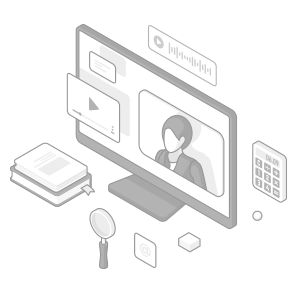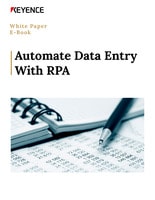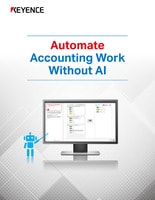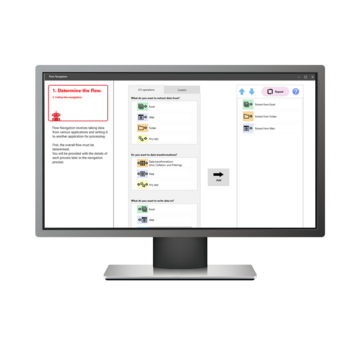RPA (Robotic Process Automation)
Employee Timesheet and Payroll Automation With RPA

Managing employee timesheets and processing payroll can be a complex and time-consuming task for businesses of all sizes. From ensuring accurate time tracking to calculating overtime and deductions, the process involves multiple steps and a high degree of accuracy. However, manual timesheet entry and payroll processing are prone to errors, inefficiencies, and compliance risks. These challenges can lead to employee dissatisfaction, compliance issues, and increased operational costs.
Robotic Process Automation (RPA) offers a powerful solution to automate these critical tasks. By integrating RPA into your timesheet and payroll systems, you can streamline processes, reduce errors, and ensure compliance—all while freeing up your HR and finance teams to focus on more strategic activities.
Discover more about this product.
Click here to book your demo.

How RPA Transforms Timesheet and Payroll Automation
Eliminating Manual Data Entry
Manual data entry into timesheet systems or payroll software is prone to errors and delays, especially when employees submit their timesheets at different times. With RPA, businesses can automate the collection of timesheet data, ensuring that hours worked are accurately logged and processed without human intervention.
Automating Payroll Calculations
Payroll involves complex calculations, including tax deductions, benefits, bonuses, and overtime. Manual calculations can lead to mistakes, causing underpayments or overpayments. RPA can handle these calculations swiftly and accurately, ensuring that employees are paid the correct amount on time, every time.
Ensuring Compliance and Accuracy
Labor laws and tax regulations vary by location and industry. Keeping up with these regulations can be a daunting task for HR and payroll teams, especially when operating across multiple jurisdictions. RPA can automate the compliance process by integrating with the latest regulations, ensuring accurate tax filings, benefits processing, and wage calculations.
Reducing Administrative Costs
Processing timesheets and payroll manually can be a labor-intensive process. Automating these tasks with RPA helps reduce the time spent on administrative tasks, allowing HR teams to focus on employee engagement, recruitment, and other core responsibilities. In turn, businesses can save costs on manual payroll management.
Improving Employee Satisfaction
Employees expect timely and accurate paychecks. By automating payroll processes, companies can ensure employees are paid on time and their compensation is calculated accurately, resulting in higher employee satisfaction and trust in the organization.
RPA Use Cases for Timesheet and Payroll Automation
- Automated Timesheet Entry: RPA can collect and validate employee work hours from time tracking systems or manual submissions, automatically entering the data into the payroll system without requiring HR involvement.
- Payroll Calculation: Automate the calculation of regular pay, overtime, bonuses, and deductions to ensure that employees are paid the correct amount according to company policies and legal regulations.
- Tax and Benefits Deductions: RPA can ensure that the correct taxes and benefits deductions are applied based on the employee’s location and role, taking the complexity out of compliance.
- Payroll Processing: RPA can automatically initiate payroll processing, generating paychecks or direct deposits on the specified payroll date, and notifying employees of their payments.
- Reporting and Auditing: RPA can generate accurate payroll reports and audits, tracking payment history and ensuring that all transactions comply with company policies and regulations.
Integrating RPA With Payroll Systems
KEYENCE’s RPA can seamlessly integrate with popular payroll software, as well as homegrown systems. By linking RPA with these systems, businesses can automate every aspect of payroll, from data entry and calculation to compliance reporting and employee communication.
This integration reduces the burden on HR teams and ensures that payroll is processed on time, every time, with minimal intervention.
Who Benefits From RPA in Timesheet and Payroll Management?
- HR Departments: Automate the time-consuming tasks of collecting timesheets, calculating payroll, and ensuring compliance with labor laws and tax regulations.
- Finance Teams: Streamline payroll accounting and reporting by automating the payroll process and ensuring accurate and timely financial statements.
- Employees: With RPA, employees benefit from timely and accurate paychecks, eliminating payroll-related issues and improving overall employee satisfaction.
- Business Owners: Save time and money by automating administrative payroll tasks and ensuring compliance with ever-changing tax and labor laws.
Automating employee timesheet and payroll management with RPA leads to increased accuracy, compliance, and cost savings, all while improving employee satisfaction.
FAQs
How Does RPA Ensure Payroll Compliance?
RPA automatically updates payroll systems with the latest tax rates, benefits, and labor laws, ensuring that all payroll calculations and deductions are in line with current regulations.
Can RPA Handle Complex Payroll Systems?
Yes, RPA can handle complex payroll systems, including multiple pay structures, overtime calculations, and variable deductions. It can integrate with existing payroll software to ensure accurate processing.
How Does RPA Improve Employee Timesheet Accuracy?
RPA automates the collection and validation of employee work hours, eliminating manual errors and ensuring that timesheet data is entered accurately and promptly.
We’re here to provide you with more details.
Reach out today!

Related Downloads
Related Products
Scroll




